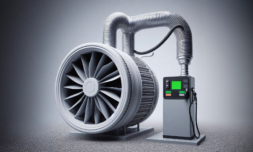Hydrogen is heralded by many as the key to decarbonising energy, but the UAE’s ‘low carbon’ way of transporting it through blue ammonia is drawing scepticism from experts.
When the president of the world’s leading climate conference is simultaneously the chief of a top 10 oil production empire, it’s understandable that experts would want his grandiose ecological claims to be substantiated with science.
In recent years, Sultan Al Jaber has touted ‘blue ammonia’ as the means of finally unlocking the vast potential of hydrogen – which, if correctly harnessed, could reportedly decarbonise our most pollutant industries for good.
Ammonia is a man-made carrier of hydrogen, created when the gas and nitrogen react, and is the current method of choice for transporting and storing the majority of hydrogen we make.
The main problem, however, is that creating ammonia is an energy-intensive process in itself, accounting for 3% of global carbon emissions.
Sultan Al Jaber claims that blue ammonia is a ‘low carbon’ alternative which will underpin the hydrogen economy in the imminent future, making it affordable and feasible to implement.
While green ammonia is the only truly sustainable form of the gas, created using expensive renewable energy, blue ammonia involves employing carbon capture to manually remove CO2 from the regular ammonia-making process.




















